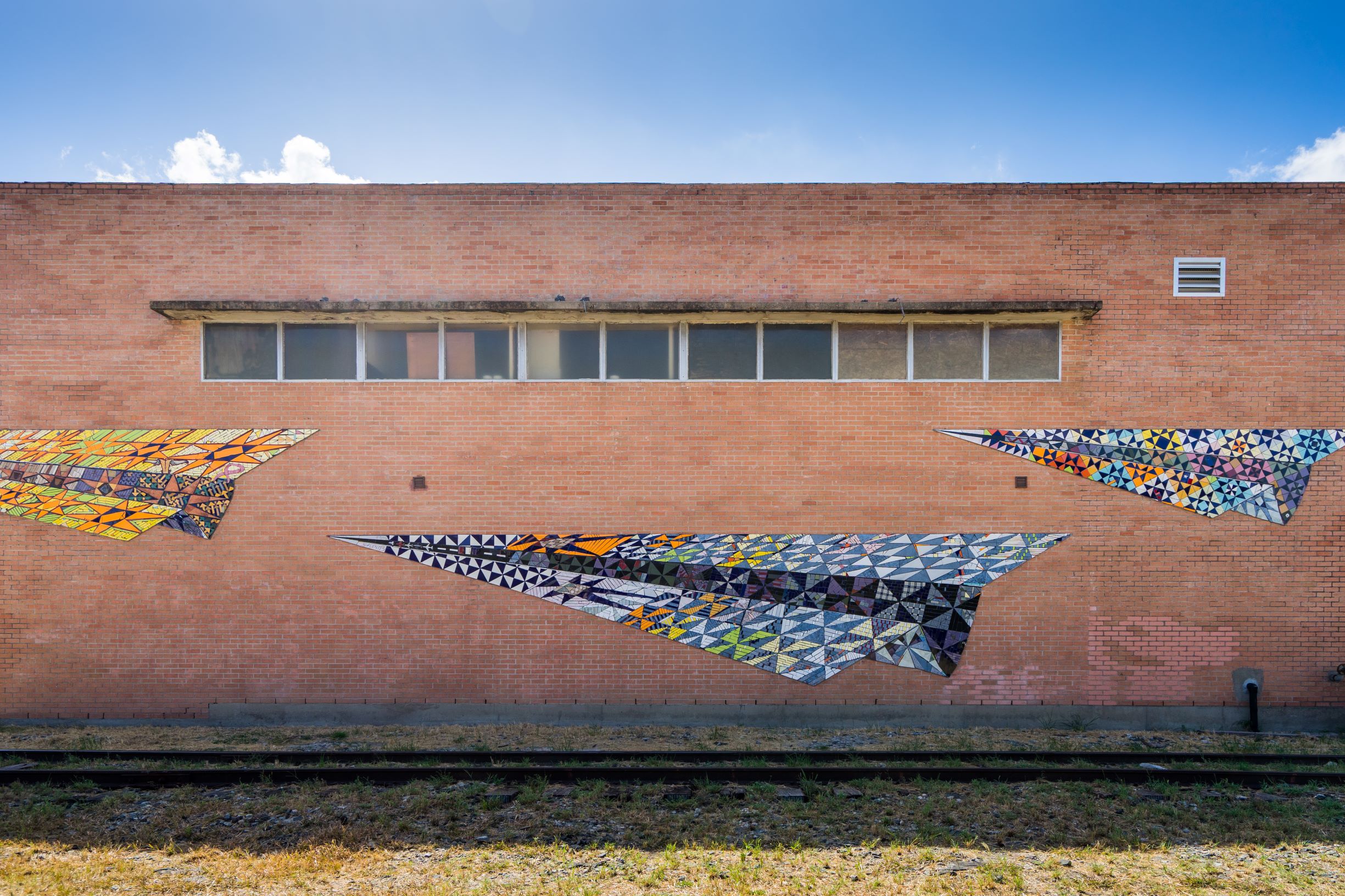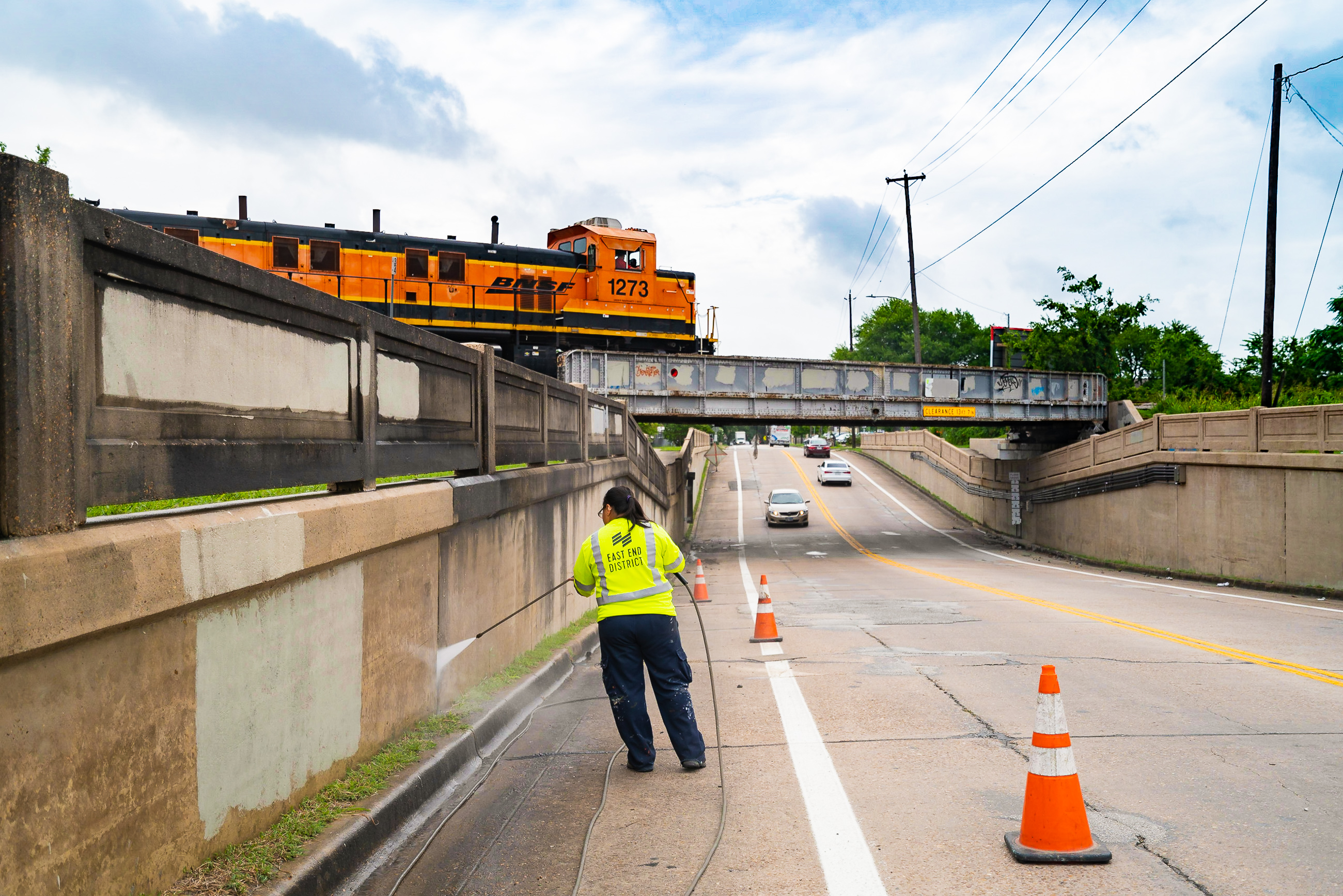Regions and Neighborhoods: The East End
Published Aug 20, 2020 by Kelsey Seeker
With COVID-19 limiting activity around the city, we are taking a virtual tour of local neighborhoods and communities found in the greater Houston region.
As diverse as the residents of Houston, each of these areas contributes to unique characteristics and strengths. We’ll explore what makes each of these areas a great place to live, work and build a business.
To start the series, we spoke with Dan Joyce, Director of Public Affairs at the East End Management District.
Located just east of downtown Houston, the East End has a long history and was instrumental in Houston’s development as a modern city. With a diverse mix of restaurants, bars, art spaces, and multicultural grocery marts, this neighborhood feeds off the energy of nearby sports stadiums and parks downtown but offers its own unique character. With many local businesses and murals, you'll want to take a mini-tour of this growing area of Houston.
Can you start off by talking a bit about the history of this part of town?
John Richard Harris pioneered his way from Missouri and founded the town of Harrisburg at the junction of Buffalo Bayou in 1826. The town thrived, and by 1829, Harris had established the first industry, a steam-operated sawmill, in what is today the Houston Metropolitan Area. Like Harrisburg was for the Republic of Texas, the East End was the backbone of early industry in Houston. Traditionally perceived as the industrial part of Houston, the East End’s historic economic success is only rivaled by its diversity.
How does the East End contribute to the fabric of Houston?
This district is known for its industrial zones as well as its cultural heritage. Creative placemaking initiatives led by the East End District, in partnership with the East End Houston Cultural District, are revitalizing and reshaping the Historic East End neighborhoods as significant cultural landmarks in the City of Houston.
Preservation of historic buildings and cultural institutions along with the expansion of pedestrian-friendly green space and public art tours are encouraging Houstonians to view the East End District as a strategic partner in city-wide events.
Culture, education, and advocacy are common themes for the community. The East End is home to many families and individuals who wish to shape their environment and have a voice in their community.
Tell us about your work in this neighborhood.
The East End District has been serving commercial property owners throughout the 16 square miles east of downtown Houston since formation in 1999. The services, which are funded by assessments paid by commercial property interests in the District, include public safety programs, an award-winning graffiti abatement program, maintenance of major thoroughfares, and disposal of illegally dumped trash. Additionally, the District’s grant-funded capital program focuses on connecting neighborhoods and business to transit and will result in $43 million in improvements through 2021.
Partnering with East End schools and local workforce training programs, the District recognizes the critical need for job skills training and other education programs that link workers to employers. To that end, the District allocates 3% of annual assessment revenue toward workforce development projects that benefit both workers and employers in the East End.
An area of the District is also recognized as the East End Houston Cultural District, a designation made by the Texas Commission on the Arts in 2014 after the East End District’s application was granted. Through this designation, the District seeks economic development opportunities through cultural tourism, arts preservation, and new public arts and culture opportunities.
What are some unique characteristics of the neighborhood / Second Ward?
If you’re a resident or frequent visitor of the East End, you’ll know that the options for getting around are better than most of the rest of the city. Whether by METRO Bus or Rail, the Columbia Tap and Harrisburg bike trails, or private vehicle, the East End is multi-modal with links to more miles of rail, trails, and bus routes than any other area in the city.
The ease of getting around, paired with one of Houston’s greatest collections of public art, make the East End a wonderful place to explore. The most recognizable artform in the East End is our vast array of murals and urban art. Local artists of the area have dedicated their time to artistic expression, ranging from cultural traditions to political observations. These graffiti styled public art installations range greatly in representing their themes. The art can be seen painted on the side of bus stops, fences along the road, local businesses and community centers as they are dispersed around the East End.
Describe the business community in the area.
Businesses in the East End District are entrepreneurial by nature. Gradually, the East End has shifted from strictly industrial facilities, into the city’s cultural melting pot and hotbed for small businesses. Open office spaces, cultural facilities, universities, parks, the arts, and deep-rooted heritage are all working together to help transform the perception of the growing East End.
With the East End Maker Hub about to come online, we’re creating the perfect arena for job creation, job training, and high-tech manufacturing to support the needs of many area businesses and industries. Many of the businesses in the area are deep rooted, often the result of multi-generational operators or histories as old as the community itself, all while attracting newcomers for the very same reasons these institutions laid down roots in the first place.
Why would a business choose to relocate or build here?
The East End remains the commercial center of Houston today. It’s also the hub of the city’s transportation systems. The East End links the industrialized centers of the United States and Canada with the Port of Houston and Mexico.
In addition, we would argue that the aforementioned services and capital programs provided by the East End District and a very active Houston East End Chamber of Commerce would be a leading factor in attracting new business to the East End. Those programs and services, coupled with still-reasonable land prices near the city’s core, skilled labor, and a strong inventory of adaptive reuse opportunities, the East End District is an attractive option to businesses large and small.
How can Houstonians support businesses in the East End during this economically challenging time?
Most of our area restaurants have been offering curbside and to-go options during these challenging times while many have also reopened at mandated limited capacities for dine-in customers. A new “East End Strong” Facebook group has also provided area businesses and residents a platform to share updates and seek assistance. We recommend following our social media channels to stay connected with updates and ways to support – Find the East End Houston Cultural District at @eastendhou (Instagram/Facebook/Twitter) and the East End District at @EastEndDistrict on Facebook and Twitter.
What are 4-5 signature East End spots to visit?
- The Original Ninfa’s on Navigation founded in 1973 by Mama Ninfa Laurenzo. Stop by for a famous Ninfarita and a plate of tacos al carbon. Mama Ninfa is responsible for introducing the United States to tacos al carbon, after all.
- Leo Tanguma’s Rebirth of our Nationality mural, spanning almost 300 feet long at 5900 Canal Street. Originally completed in the early 1970s as one of the largest canvases of the Chicano art movement, local legend GONZO247 and team helped Tanguma restore and bring the iconic mural back to life in 2018.
- Magnolia’s Ice Cream in Magnolia Park (6421 Brady Street) is a hidden gem (and perhaps one of our most guilty pleasures). A casual counter dispensing fruit-based frozen treats, candied apples and Mexican candies. Did someone say Kool-Aid pickles? You’re in for a treat!
- Kanomwan Thai Restaurant in Tlaquepaque Market (736 ½ Telephone Road) was one of the first restaurants to introduce Thai food to Houston and there is good reason that it’s still serving the same deliciously spicy curries all these years later. BYOB
- The Navigation Esplanade consists of a 3-block linear park along Navigation Boulevard in front of the Original Ninfa’s plays host to numerous annual cultural events and festivals, including the East End Street Fest, Sunday East End Farmers Market, and Guadalupana. Plans for an expansion are underway.
- Finca Tres Robles (257 N. Greenwood St.) is an urban farm rooted in Second Ward (and Houston’s only private farm inside Loop 610). Herbs, fruits and vegetables are offered for sale to individuals and families directly from their farm and at area farmers markets. The team works year-round to make it accessible and affordable to the immediate East End community as a way to begin to challenge the food system of the neighborhood, to build community, and to keep money here in our immediate, local economy.
What’s missing from the conversation about the East End?
We’ve talked about the public art and the ease of getting around the East End, but what about marrying those two conversations? A bike tour might be the absolutely perfect way to experience all the East End has to offer. Plan your visit by utilizing EastEndHouston.com or HoustonMuralMap.com and map out a route of murals with a few refreshments stops along the way (we may suggest saving the Ninfarita for the end).
The Regions and Neighborhoods Business Resource Group provides members with resources, knowledge and contacts to help develop your regional and neighborhood business. Working with local community and business leaders, we connect members with unique regional assets and business opportunities. Click here for more information about membership.
 The Houston Report
The Houston Report



















